Abstract
The emission spectra of polar aromatic molecules in rigid, polar solution are shown to depend on the exciting wavelength. Occurrence of the phenomenon depends on both the excited-state lifetime of the chromophore and the degree of rigidity of the medium. The results are interpreted in terms of a model which stresses the contribution of micro-environmental heterogeneity to electronic absorption and emission spectra.
Full text
PDF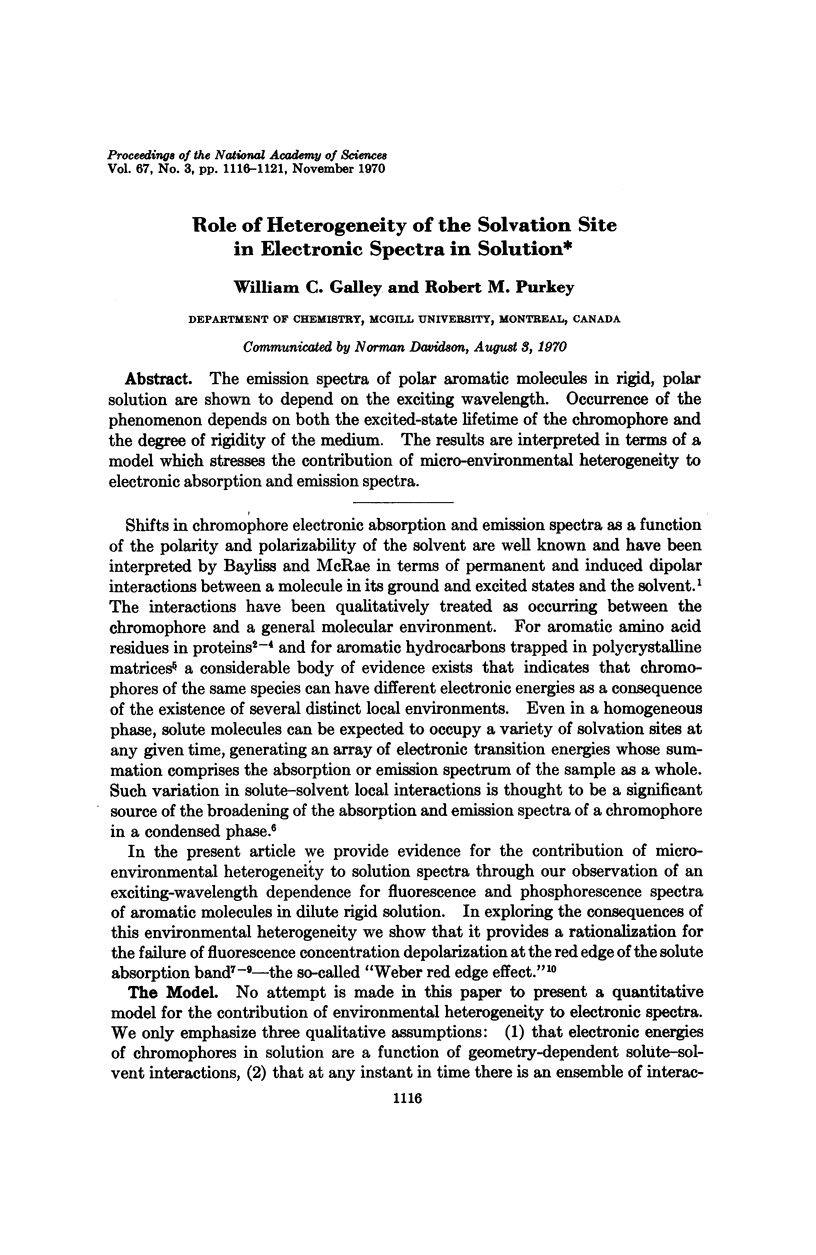
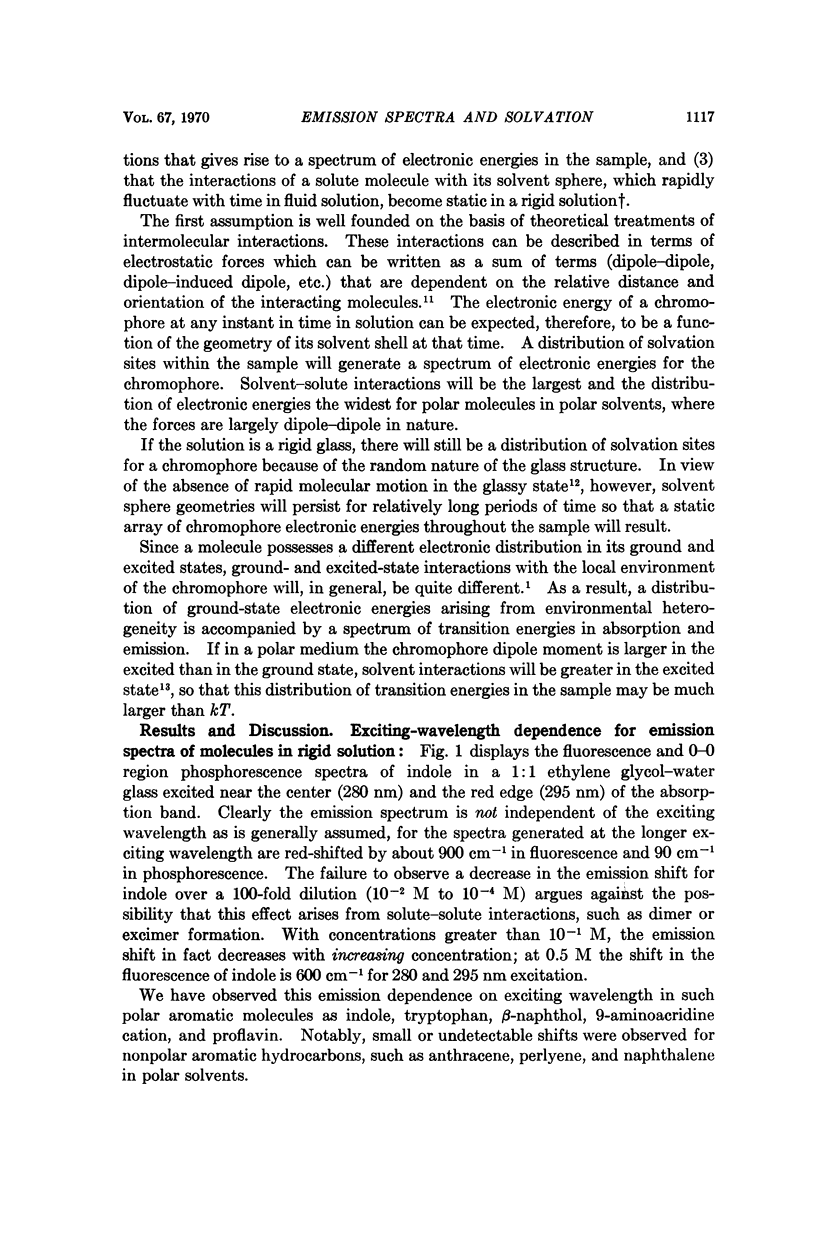
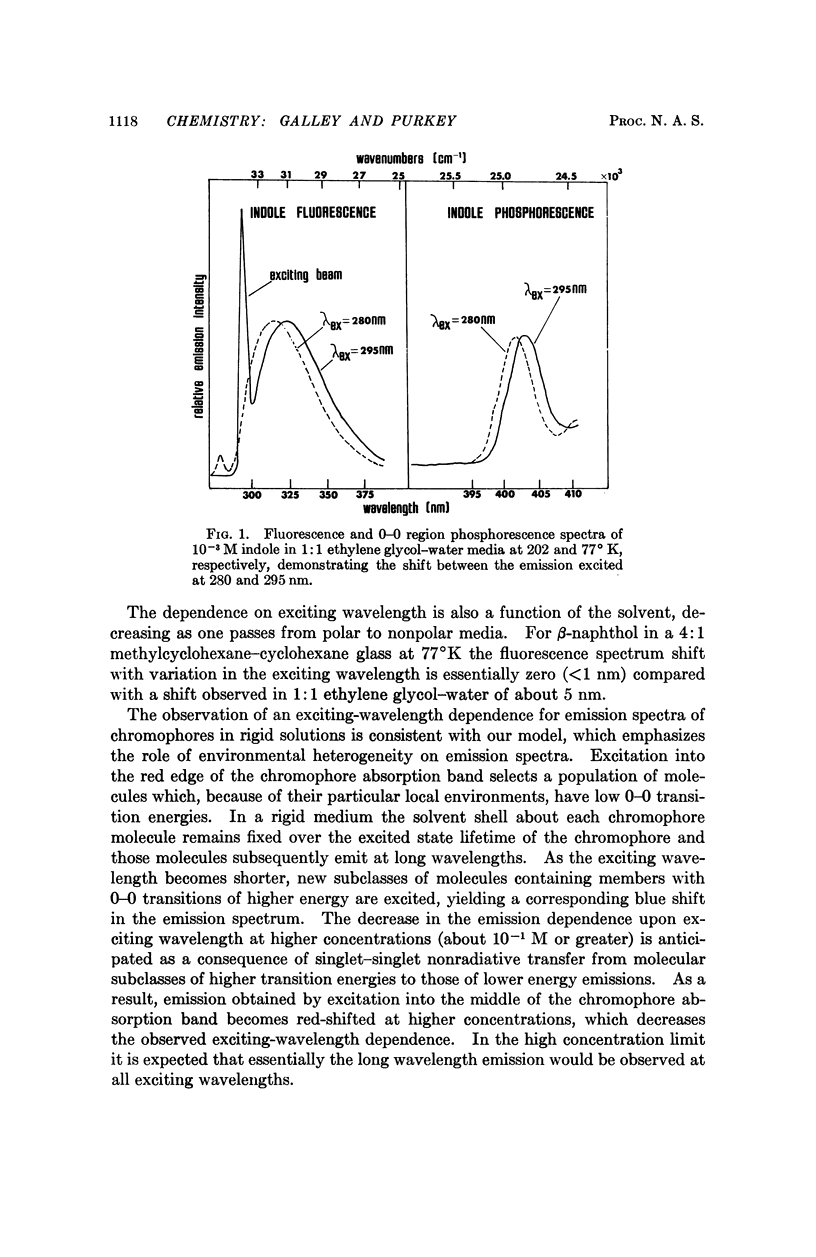
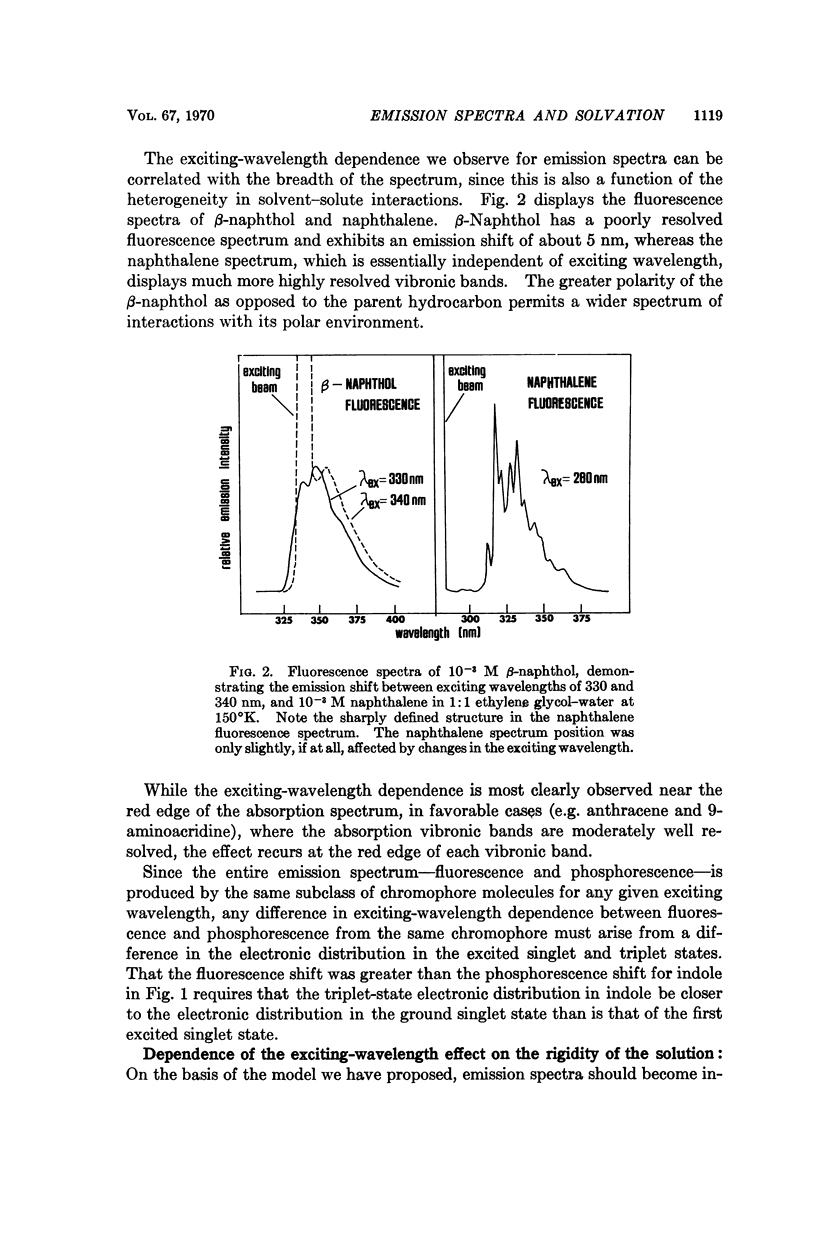
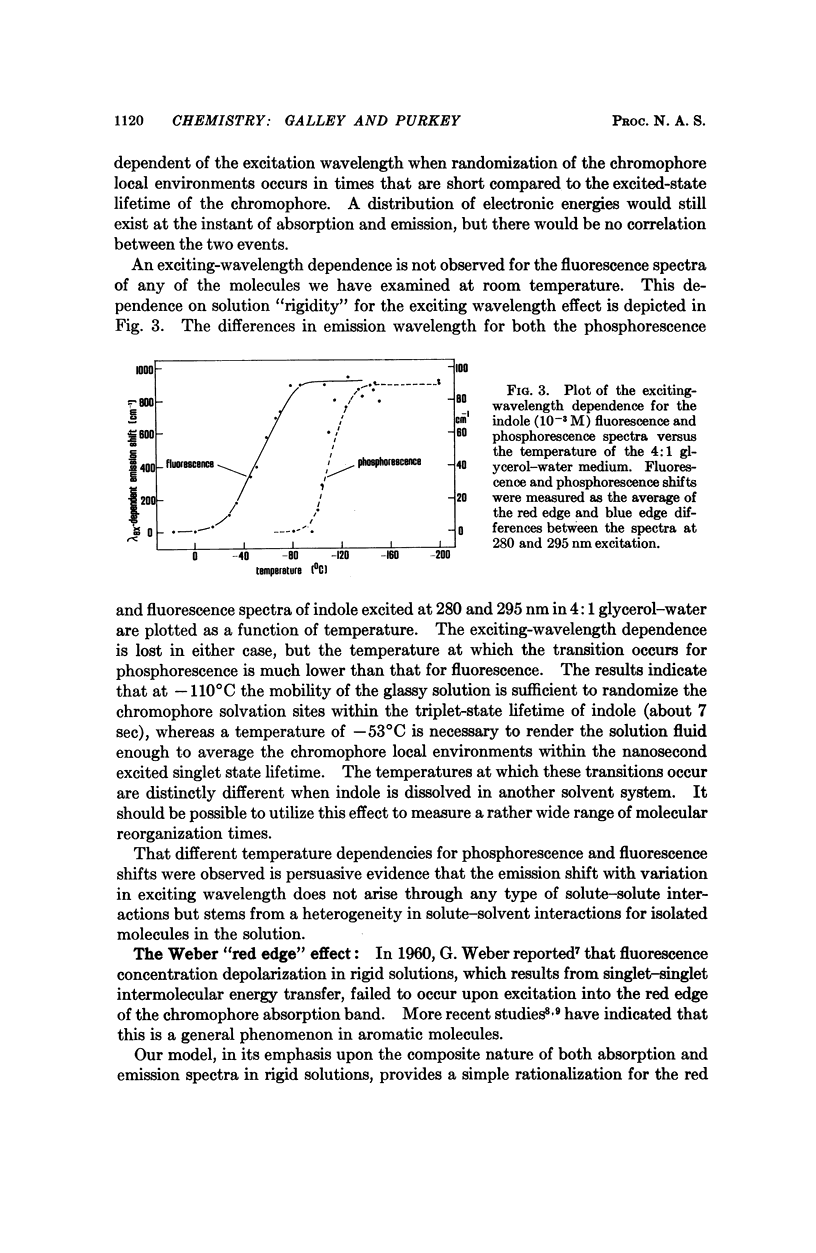
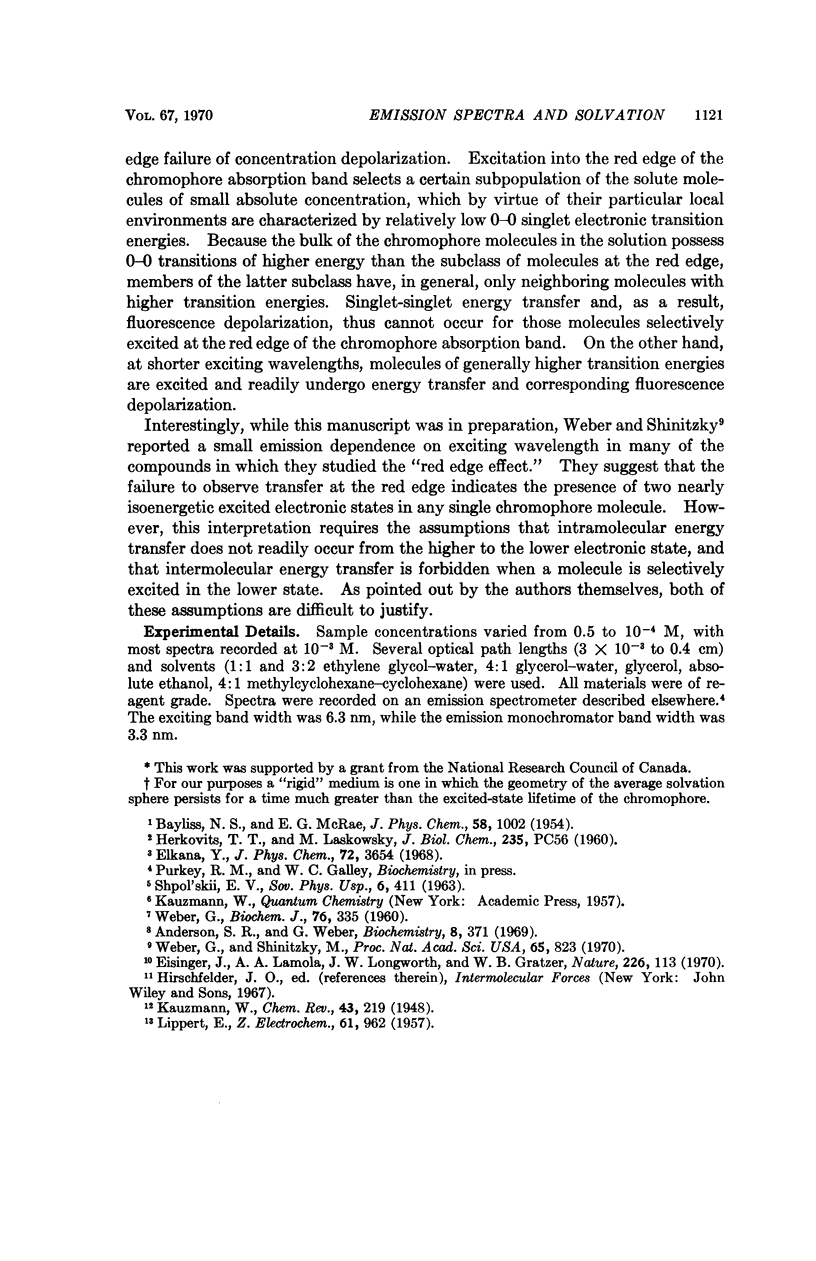
Selected References
These references are in PubMed. This may not be the complete list of references from this article.
- Anderson S. R., Weber G. Fluorescence polarization of the complexes of 1-anilino-8-naphthalenesulfonate with bovine serum albumin. Evidence for preferential orientation of the ligand. Biochemistry. 1969 Jan;8(1):371–377. doi: 10.1021/bi00829a051. [DOI] [PubMed] [Google Scholar]
- Eisinger J., Lamola A. A., Longworth J. W., Gratzer W. B. Biological molecules in their excited states. Nature. 1970 Apr 11;226(5241):113–118. doi: 10.1038/226113a0. [DOI] [PubMed] [Google Scholar]
- Elkana Y. Differentiation between tryptophan residues in proteins. J Phys Chem. 1968 Oct;72(10):3654–3661. doi: 10.1021/j100856a050. [DOI] [PubMed] [Google Scholar]
- WEBER G. Fluorescence-polarization spectrum and electronic-energy transfer in tyrosine, tryptophan and related compounds. Biochem J. 1960 May;75:335–345. doi: 10.1042/bj0750335. [DOI] [PMC free article] [PubMed] [Google Scholar]
- Weber G., Shinitzky M. Failure of Energy Transfer between Identical Aromatic Molecules on Excitation at the Long Wave Edge of the Absorption Spectrum. Proc Natl Acad Sci U S A. 1970 Apr;65(4):823–830. doi: 10.1073/pnas.65.4.823. [DOI] [PMC free article] [PubMed] [Google Scholar]


